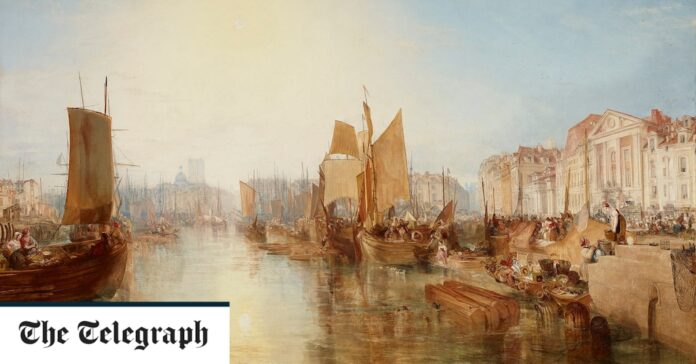On loan at the National Gallery from New York’s Frick Collection, these two monumental creations are good enough to eat
We’re not short of pictures by JMW Turner in this country: the Turner bequest, much of it on display in a dedicated wing at Tate Britain, comprises 300 oil paintings and thousands of watercolours and sketches. So, news that two more canvases by this colossus of 19th-century British landscape painting are coming to the National Gallery may elicit little more than a shrug. A pair of bustling harbour scenes rendered in Turner’s characteristic chrome-yellow tones as if viewed through a vat of golden syrup – or a sandstorm blown in from the Sahara? Yawn: too familiar – and, surely, unlikely to compare favourably with his late masterpieces nearby, The Fighting Temeraire (1839) and Rain, Steam, and Speed (1844).
Yet, the cleverly titled micro-show Turner on Tour, a free display in a small room above the gallery’s vestibule (the same spot where Gainsborough’s Blue Boy appeared earlier this year), is worth popping into, if only to while away a few minutes when passing through the West End. Focused shows like this one are increasingly en vogue, and offer a welcome change in tempo from the sometimes relentless, exhausting beat of bigger, blue-ribbon exhibitions.
The set-up is simple. Two monumental oil paintings, each more than 7ft across, are presented side by side, both – exceptionally – on loan from the Frick Collection in New York, while the museum’s Fifth Avenue mansion, built by the industrialist Henry Clay Frick, undergoes restoration. Turner created these panoramic views of the swarming harbours of Dieppe and Cologne when he was at the height of his powers in his early fifties, in competition with the 17th-century French painter Claude Lorrain.
Seen in Britain for the first time since 1911, the paintings are both themselves “on tour” (from America), and, because they were based on sketches made in situ, representative of the peripatetic working methods of an artist-traveller who habitually visited Europe during the summer months, hunting for material that could later be turned into exhibition-worthy compositions.


